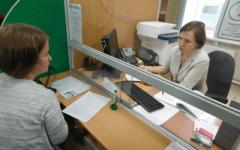Tissues and cavities that come into contact with the external environment - the skin, the sections of the respiratory tract located up to the glottis, the mucous membranes of the eyes and nose, the vagina, the gastrointestinal tract - are open biological systems that are colonized by microorganisms.
Microbiocenoses differ in their qualitative composition and population density. Permanent microflora contains representatives specific to this biotope, the random one consists of individuals brought in from the outside (for example, from the gastrointestinal tract - with food). The physiological role of representatives of permanent microflora is ambiguous. It distinguishes 2 fractions:
- Obligant microflora- the main component of the microbiocenosis, participates in the processes of fermentation, immunostimulation, that is, it performs protective and other normal physiological functions. It is manifested by fermentation activity (decomposition of carbohydrates with the formation of acidic products),
- Optional microflora makes up the smaller part. Participates in putrefactive processes (decay of protein substances with the formation of alkaline products). Normophysiological functions - counteraction to random microflora, participation in enzymatic processes important for the local biotype. With dysbiosis, the number of representatives of the facultative microflora grows - they cause pathological processes (suppuration, necrosis).
Characteristics of the main microbiocenoses of the human body.
The skin exhibits both aerobic and anaerobic flora. Bacteria form accumulations under the layer of keratinized cells of the epidermis, in the mouths of hair follicles, sweat and sebaceous glands. The concentration and species composition depend on the sebum content, moisture, pH, temperature. The secretion of sweat glands, neutral pH and heat lead to an increase in the number of microorganisms.
The obligate microflora includes the species Corynebacterium, Staphylococcus, Micrococcus, Propionibacterium. On the skin of healthy people, there are no enterobacteria, yeast-like fungi, bacteroids. In newborns, the superficial fat layer is quite dense, and further decreases. Simultaneously with age, the density of normal microflora decreases.
The normal microflora of the conjunctiva is dominated by diphtheroids (corynebacteria similar to diphtheria rods), neisseria, moraxella (rod-shaped or coccobacillary bacteria that cause conjunctivitis). The quantitative and qualitative composition of bacteria is affected by the lacrimal fluid, which contains lysozyme, which has antibacterial properties.
The peculiarity of the microflora of the ear is the absence of bacteria in the middle ear (bactericidal effect of earwax). However, they can enter the middle ear through the Eustachian tube, from the pharynx. In the outer ear, staphylococci, corynebacteria are found, Pseudomonas and Candida are less common.
The intrinsic microflora of the nose is represented by corynebacteria, neisseria, coagulase-negative staphylococci, alpha-hemolytic streptococci. Transient species: Staphylococcus aureus, Escherihia coli, beta-hemolytic streptococcus.
The microbiocenosis of the oral cavity is diverse, it contains about 300 species, the maximum concentration reaches 108-1011 microorganisms per 1 g of saliva. The anaerobic microflora of the oral cavity begins to develop rapidly after teething. The natural microflora is made up of bacteroids, fusobacteria, staphylococci, neisseria, streptococci, spirochetes, lactic acid bacteria. Despite the anatomical proximity - sinuses, Eustachian tubes, lower respiratory tract are normally sterile.
Microflora esophagus and stomach is not constant, depends on the nature of the food. In the esophagus - corresponds to the microbiological composition of the mouth. The microbiocenosis of the stomach is poor - it is represented by lactobacilli, streptococci, Helicobacter, yeast-like fungi.
The intestine is a biotope with a high density of microbial colonization. In the duodenum and small intestine, streptococci, lactobacilli, veilonella predominate, in the ileum - Escherichia coli and anaerobic bacteria. The large intestine is home to 500 species of microorganisms.
Distinguish intestinal microflora:
- - Mucous or parietal - together with the components of the extracellular matrix, forms a biofilm. Special studies have shown that physiological processes, including the production of metabolites, take place in a biofilm, in a different way compared to pure cultures of bacteria. The community forms a single genetic system in the form of plasmids that carry the behavioral code for the members of the biofilm, determining their trophic, energetic connections between themselves and the environment - the social quorum sensing behavior of microorganisms. The reaction of microorganisms to changes in environmental conditions in a biofilm differs significantly from the reaction of each individual species. Such an organization ensures its physiological and functional stability and is the key to competitive survival in an ecological niche;
- - Skylight.
Human mucous membranes are inhabited with a continuous lawn by associations of anaerobic (97%) and facultative anaerobic bacteria. Their total biomass is 5% of the weight (2-5 kg). The mucous membranes contain enterobacteria, enterococci, staphylococci, lactobacilli, bacteroids, bifidobacteria, clostridia. The presence of actinomycetes was noted.
Natural microflora performs important physiological functions:
1) provides the colonization resistance of the mucous membrane, that is, it prevents the fixation and reproduction of microbes unusual for the biotope. The acidic environment, which is provided by lactic acid and acetic acid of lactobacilli and bifidobacteria, prevents the reproduction of putrefactive and pathogenic microflora;
2) stimulates the formation of the immune system in newborns and support the immune tone in adults with the help of peptidoglycans of the bacterial cell wall and other adjuvant active macromolecules;
3) participates in metabolic processes - due to the production of enzymes for the metabolism of proteins, lipids, RNA, bile acids, maintenance of water-salt balance, synthesis of vitamins of group B, K, D, regulation of the intestinal gas environment;
4) participates in the biochemical processes of digestion;
5) ensures the inactivation of exogenous and endogenous toxic products using the mechanisms of biotransformation and biodegradation.
Escherichia coli bacteria have a complex antigen structure. Unlike Salmonella, they have not two, but 3 antigens - O - somatic, H - flagellate, K - capsular (surface). Among the group there are pathogenic, opportunistic, useful strains. Biochemically very active - they break down lactose, glucose, mannitol, maltose, dextrose, galactose, xylose, liquefy gelatin, reduce nitrates and nitrites, predominantly form indole, do not decompose inositol and do not form hydrogen sulfide.
Microflora vagina and vulva depends mainly on the hormonal status, the nature of which determines the metabolic selection of certain microorganisms. Estrogenic hormones cause the saturation of the cells of the columnar epithelium of the vagina with glycogen, which is utilized by Lactobacillus acidophilus. In small concentrations, there are corynebacteria, bifidobacteria, coca.
This character is established from the moment of puberty at 12-13 years old and persists until menopause. Girls in the first months of life have a similar microflora pattern. Another microbiocenosis is established from 2 to 12 years old, when maternal estrogenic hormones are depleted and glycogen disappears. Coccal bacteria dominate, the antagonistic properties of which are not very high. Therefore, girls are very vulnerable to contracting sexually transmitted diseases through household items.
Pregnancy is accompanied by an estrogenic explosion, promotes additional development lactobacilli and purification birth canal from microflora, unfavorable for newborns. Termination of pregnancy suppresses the colonization resistance of the vaginal and vulvar epithelium, leading to the development of pyoinflammatory processes. In chronic dysbacteriosis, fecal microflora (Escherichia coli, enterococci, candida, staphylococci) predominates.
Normally, in a healthy child or adult, microflora is resistant to damaging factors. Eubiosis is a normal state of the natural microflora of the body. It is characterized by a stable composition of microbiocenoses and the full range of their physiological functions. Microbiological standards, which are guided in determining eubiosis, vary widely. There are often interpopulation differences that depend on climatic and geographical conditions and dietary habits (the Far North, the Caucasus or Africa, vegetarianism, diet) and age.
Dysbiosis - characterized by a deviation in the composition of the microbiocenosis, which significantly goes beyond the physiological norm. According to one of the assessments of the state of intestinal dysbiosis, there are three types of disorders:
- a) isolated, in which there is a violation of either aerobic or anaerobic autochthonous microflora,
- b) combined - simultaneous violation of the aerobic and anaerobic links,
- c) dislocated - there is an exit of microflora outside the natural biotope, that is, the movement, for example, of microorganisms of the gastrointestinal tract, exit into the general bloodstream.
Skin microflora
- aggregate different types microorganisms that use the skin as a habitat.Our skin, due to its constant contact with the external environment, becomes a habitat for a huge number of transient microorganisms.
In addition, the skin has its own permanent and well-studied microflora. Its composition differs in different anatomical zones, depending on
- the oxygen content in the environment of the bacteria (aerobes - anaerobes) and
- proximity to mucous membranes (mouth, nose, perianal region), secretion characteristics and even human clothing.
Particularly abundantly populated with microorganisms are those areas of the skin that are protected from the action of light and drying:
Armpits;
interdigital spaces;
inguinal folds;
crotch.
In this case, the microorganisms of the skin are affected by the bactericidal factors of the sebaceous and sweat glands.
Skin microflora composition
The resident microflora of the skin and mucous membranes contains:
Staphylococcus epidermidis;
Staphylococcus aureus;
Micrococcus spp .;
Sarcina spp .;
coryneform bacteria;
Propionibacterium spp.
As part of the transit:
Streptococcus spp .;
Peptococcus spp .;
Bacillus subtilis;
Escherichia coli;
Enterobacter spp .;
Acinetobacter spp .;
Lactobacillis spp .;
Candida albicans and many others.
Food in exchange for safety.
What connects our skin and its microflora?
For microflora, our skin is place of residence and power supply... The secretion of sebaceous and sweat glands provides our lesser friends with everything they need for their life and growth.
We are for them Homeland nursing Mother.
And so, an army of aliens appears, transient bacteria. Our native Streptococcus spp and Peptococcus spp put on helmets and armor and go out to the Kulikovo field. The enemy is defeated again! Homeland is saved!
The homeland (our body) is also happy, because its own microflora, on the whole, is friendly to it. And among the aliens there are dangerous disease-causing bacteria that do not bring us anything good.
In the dry language of science, it sounds like this:
The bactericidal properties of microflora
The vast majority of microorganisms, including pathogenic ones, do not penetrate through intact skin and die under the influence of the bactericidal properties of the skin. Factors that can have a significant impact on the removal of unstable microorganisms from the surface of the skin include:
Acidic reaction of the environment;
the presence of fatty acids in the secretions of the sebaceous glands and the presence of lysozyme (lysozyme is an antibacterial enzyme that destroys the walls of bacteria).
She is always with us
Neither profuse sweating, nor washing or bathing can remove the normal permanent microflora or significantly affect its composition, since the microflora is quickly restored due to the release of microorganisms from the sebaceous and sweat glands, even in cases where contact with other areas of the skin or with the external environment
completely discontinued. Therefore, an increase in the contamination of a particular area of the skin as a result of a decrease in the bactericidal properties of the skin can serve as an indicator of a decrease in the immunological reactivity of a macroorganism.
Hygienic education plays an important role in the formation of a high sanitary culture of the population, literacy in matters of health protection. Children with early age the meaning and significance of each hygiene skill must be clarified. Given that skills are a kind of reflexes, they must be performed systematically, consistently, at the same time.
Parents, healthcare workers, educators, teachers, educators, and the media should instill hygiene skills in children. Middle and senior students are familiar with basic hygiene rules for a long time, but they do not always follow them.
INTRODUCTION
The air always contains a certain amount of microorganisms. With the help of air, they spread. Pathogenic microbes that cause diseases of plants, animals and humans can spread by air.
The number of microorganisms in 1 cubic meter of air in different places can reach the following sizes: in a barnyard up to 2 million; in residential premises - 20 thousand; on the streets of cities - 5 thousand; in parks - 200; in the sea air - 1-2.
Target
a clear justification for the need to comply with school hygiene rules.
Tasks
1. To test the air of the gymnasium classrooms for microbial contamination (before, after lessons and after an hour of airing) using the sedimentation method.
2. Investigate the microflora of the skin of the hands of schoolchildren (immediately after the lesson physical culture, after processing with a damp cloth and washing hands with soap).
3. Promote hygiene practices during training sessions.
STUDY
Indoor air microflora more uniform and relatively stable. Among microorganisms, the inhabitants of the human nasopharynx dominate, including pathogenic species that enter the air when coughing, sneezing or talking. The main source of air pollution by pathogenic species is bacteria carriers. The level of microbial contamination depends mainly on the density of population, the activity of movement of people, the sanitary condition of the room, including dust contamination, ventilation, the frequency of ventilation, the method of cleaning, the degree of illumination and other conditions. Thus, regular ventilation and wet cleaning of the premises reduces the contamination of the air by 30 times (in comparison with the control rooms). Self-cleaning of indoor air does not occur.
In countries with cold climates, it is natural to want to save energy by reducing ventilation with the onset of cold weather in order to only maintain indoor air quality at a minimum acceptable level. Over the past 20 years, in the economically developed countries of the world, allergic reactions and cases of asthma have become twice as likely. This disease is becoming one of the most important health problems. Huge funds are required for medicines, patient care and compensation for temporary disability. It is hypothesized that the main reason this problem is the deterioration of the air quality in residential premises. Rising tariffs for energy and, in particular, for electricity, large-scale campaigns to stimulate energy savings are leading to the insulation and "sealing" of homes, while reducing ventilation costs.
Studies in Denmark and Sweden have shown a clear relationship between typical office productivity and air quality. The same problem exists in schools, where air quality is often not very high.
Indoor air microflora
Air is a medium in which microorganisms cannot reproduce due to lack of nutrients and lack of moisture. The viability of microorganisms in the air is provided by suspended particles of water, mucus, dust, pieces of soil, etc. Atmospheric air and indoor air differ significantly in the quantitative and qualitative composition of microflora. Bacterial contamination of residential premises sometimes exceeds the contamination of atmospheric air, including pathogenic microorganisms that enter the air from sick people, animals and bacteria carriers. Air microflora is conventionally divided into resident (more often found) and temporary (rarely found).
The permanent microflora of the air is formed by soil organisms; it relatively regularly includes Micrococcus roseus, M. flavus, M. candicans, Sarcina flava, S. Alba, S. Rosea, Bacillus subtilis, B. Mycoides, B. Mesentericus, all species Actinomyces, Penicillium, Aspergillus, Mucor, etc.
The temporary microflora of the air is also formed mainly due to soil microorganisms, as well as due to species coming from the surface of water bodies.
The microflora of the air is very dynamic and undergoes continuous renewal. The saturation of the air of the gymnasium classrooms with microorganisms occurs mainly by droplets as part of the aerosol formed during conversation, coughing, sneezing, and also brought in with dirty shoes. A survey on the need to wear changeable shoes showed that students generally know why they need to change their shoes in gymnasium.

With the onset of the slushy season, the problem of wet feet becomes relevant for almost every teacher, parent and student. Autumn and winter shoes dries naturally for a very long time, and wearing wet shoes leads not only to hypothermia and colds, but also the development of fungal microorganisms. The humid and warm environment is ideal for fungus that attacks the skin of the feet and leads to unaesthetic and dangerous changes in the appearance of the foot and the appearance unpleasant odor... A weighty argument in favor of wearing a “shift”.
Experimental technique for detecting general microbial contamination of air
Research material: indoor air.
Method: sedimentation.
Result: information is given on the absence or presence of pathogenic microorganisms in the air.
The sedimentation method (cup method) is the most simple method to study the microflora of the air, although it does not have great accuracy. If cups of the same diameter are used at the same exposure time, then this method can be used to obtain comparative data on bacterial air pollution. The technique of this method is as follows. Petri dishes with frozen agar are placed in open form at different heights indoors for different periods (from 15 minutes to 1.5 hours). Then the cups are closed and placed in a thermostat. The incubation of crops is carried out within 24 hours. For a day in a thermostat, each bacterium gives a whole colony, the counting of colonies makes it possible to assess the microbial pollution of the air.
To recalculate the number of microbes per 1 m 3, they use the formula of Omelyansky, who believed that during a 10-minute exposure on the surface of a dense nutrient medium of 100 cm 2, as many microbes settle as there are in 10 liters of air (1: 100 m 3). He compiled a corresponding calculation table, using which you can calculate the total number of microorganisms in 1 m 3 of air.
Calculation of the number of microbes in 1 m 3 of air according to Omelyansky.
Calculation of the content of microbes in 1 m 3 of the air of the classrooms of the gymnasium

For greater clarity, on the same day, samples were taken from the classroom before lessons (after the weekend), after the first lesson, after the second lesson, after the sixth lesson, after cleaning and airing.





Human skin microflora
The skin is ubiquitous and quite abundantly inhabited by bacteria and fungi. The permanent inhabitants of the skin are aerobic and anaerobic, lipophilic and non-lipophilic bacteria and yeast-like fungi, fecal streptococci, Escherichia coli and many others. The composition of the skin microflora depends on age, hairiness, humidity, temperature, acidity, profession, hygienic maintenance of the skin, skin and general diseases (diabetes, jaundice, uremia, leukemia). A significant influence on the composition of the skin microflora is exerted by hospital stay (colonization by hospital variants of bacteria), prolonged use of antiseptics, corticosteroids.
The skin is unevenly populated with microbes. There are many of them on the surface and under the first and second layers of keratinized epithelium. There are also many microbes in the mouths of the hair follicles. Microbes are found in hair follicles. There are usually no microbes in the sweat and sebaceous glands due to the antibacterial activity of fatty acids and lactic acid. The distribution of microbes on the skin surface is also heterogeneous. Wet and hairy areas (perineum, groin folds, axillary fossa, interdigital spaces of the legs, terminal phalanges of the hands) are abundantly populated. An increased number of microbes is found in the sebaceous areas (face, chest, back, hairline).
Normal skin microflora performs a protective function, inhibiting the vital activity of alien pathogenic and opportunistic microbes. At the same time, the skin can serve as a source of exogenous infection and autoinfection (diseases caused by its own conditionally pathogenic microbial flora, which acquires disease-causing properties under conditions unfavorable for the body). Particularly dangerous in this respect is the microflora of the hands and perineum, often containing staphylococci and enterobacteria (a large family of bacteria, including such well-known pathogens as salmonella, E. coli, plague bacillus). On the feet and interdigital spaces of the legs, often in a large number there are fungi that cause dermatomycosis, which are transmitted to others with shoes. The accumulation of germs in damp areas can cause bad odors.
Microbiologists from the National Institutes of Health in the United States have conducted a census of the types of bacteria that live on the surface of human skin. Their study allowed for the first time to draw up a detailed map showing the prevalence of microorganisms on the human body.
The report of American scientists was published in the journal Science. During the study, they scraped skin scales from 20 different areas of the body of 10 people. Before this, the participants in the experiment were asked to wash themselves with ordinary (not antibacterial) soap for a week - to get a picture characteristic of the average healthy person... Such tests have been done by doctors before, but the researchers went further, using the method of analyzing the genetic material of the bacteria they collected.
The method of analyzing the so-called ribosomal RNA made it possible to determine which groups of bacteria the scientists met. In addition, representatives of 19 different types of bacteria were found in this way.
The term "type" in biological taxonomy corresponds to a very large group that unites a variety of organisms. Man and flounder belong to the same type, and the detection of 19 types of bacteria out of 27 existing ones indicates a high diversity of skin microflora. For convenience, scientists have proposed to divide skin areas into three types: wet, oily and dry. On oily areas of the skin (eyebrows, nose wings), biologists found the least different types bacteria: despite the fact that it is in these areas that the microorganisms that cause the development of acne live.
Wet areas of the skin are the nasal cavity, the area between the fingers and the armpits. It is humid areas that are an ideal ecosystem for the development of all types of bacteria; in terms of diversity and population, the researchers compared such areas with tropical forests.
On dry areas of the skin (the upper side of the palm and buttocks), according to scientists, bacteria do not really “like” to live: the researchers recognized the skin behind the ears as the most unsuitable for the life of microbes. It must be remembered that the older the child becomes, the more bacteria begin to develop on his skin.
Experimental technique for detecting microorganisms on the skin surface
The material for research is the skin of the hands.
Equipment and materials: containers with a dense nutrient medium.
Result: information on the number of bacteria on the fingers.
Inoculation is carried out in 3 Petri dishes as follows: the lid of the dish is slightly opened and light prints are made on the surface of the medium after exercising in the gym, after treating the hands with a damp cloth, after washing hands with soap. The medium should be touched carefully so as not to push it.
After 2-5 days, we inspect the containers and compare the number and variety of microbial colonies that have grown from fingerprints.
The fingerprint has an area of about 1 cm 2. The area of the palm is about 150 cm 2 (own calculations). Knowing the number of germinated colonies, we can assume how many microbes there can be on one hand of a student.

CONCLUSION
The goal of the work has been achieved - microbiological experiments clearly demonstrate the need to comply with such hygienic rules as wearing replaceable shoes, the need for high-quality wet cleaning and regular ventilation, washing hands during the school day after physical education lessons, after going to the toilet, before eating. The results of the research have been communicated to the gymnasium students, posted on the gymnasium website, and can also be used class teachers for themed class hours.
Supervisor
Irina Topchieva
biology teacher of the highest qualification category
Leningradsky district
MOU, gymnasium of the village of Leningradskaya
Introduction
The human body is inhabited (colonized) by more than 500 types of microorganisms that make up the normal human microflora, which are in a state of equilibrium (eubiosis) with each other and the human body. Microflora is a stable community of microorganisms, i.e. microbiocenosis. It colonizes the surface of the body and cavities that communicate with the environment. The habitat of a community of microorganisms is called a biotope. Normally, microorganisms are absent in the lungs and uterus. Distinguish between normal microflora of the skin, mucous membranes of the mouth, upper respiratory tract, digestive tract and genitourinary system. Resident and transient microflora are distinguished from normal microflora. Resident (permanent) obligate microflora is represented by microorganisms that are constantly present in the body. Transient (non-permanent) microflora is not capable of long-term existence in the body.
Normal human microflora
Skin microflora
In humans, it is fairly constant. On the skin and in its deeper layers (hair follicles, lumens of the sebaceous and sweat glands), there are 3-10 times more anaerobes than aerobes. On the surface of the skin, non-pathogenic staphylococci and streptococci, diphtheroids, various spore-forming and non-spore-forming rods, yeast-like fungi are most often found. In the deep layers of the skin, there are mainly non-pathogenic staphylococci. Pathogenic microbes that enter the skin soon die due to the antagonistic effect of normal skin microflora on them and the destructive effect of secretions from various glands. The composition of the microflora of human skin depends on the hygienic care of it. With skin contamination and microtraumas, various pustular diseases caused by pathogenic staphylococci and streptococci can occur. There are less than 80,000 microorganisms per 1 cm2 of skin. Normally, this amount does not increase as a result of the action of bactericidal sterilizing factors of the skin.
The superficial layer of the epidermis (the top layer of the skin) is completely replaced every 2 weeks. Daily from healthy skin up to 100 million skin flakes are exfoliated, of which 10% contain viable bacteria. Skin microflora can be divided into two large groups:
I. Resident flora
II. Transient flora
Resident microflora
Microorganisms representing resident (normal, permanent, colonizing) flora, constantly live and multiply on the skin. Approximately 10-20% of them can be found in the deep layers of the skin, including the sebaceous and sweat glands, hair follicles.
The greatest number of resident microbes on the hands is found around and under the nails and, to a lesser extent, between the fingers.
Resident microorganisms are almost impossible to completely remove or eradicate with routine hand washing or even antiseptic procedures, although their numbers can be significantly reduced.
Sterilization of the skin of the hands is not only impossible, but also undesirable: normal microflora prevents the colonization of the skin by other, much more dangerous microorganisms, primarily gram-negative bacteria.
Transient microflora
These are those microorganisms that are acquired by medical personnel as a result of contact with infected patients or contaminated environmental objects. Transient flora can be represented much more epidemiologically dangerous microorganisms (E. coli, Klebsiella spp., Pseudomonas spp., Salmonella spp. And other gram-negative bacteria, S. aureus, C. albicans, rotaviruses, etc.), including hospital strains of nosocomial infections.
Transient microorganisms persist on the skin of the hands for a short time (rarely more than 24 hours). They can be easily removed with routine hand washing or destroyed with antiseptics. As long as these microbes remain on the skin, they can be transmitted to patients by contact and contaminate various objects. This circumstance makes the hands of personnel the most important factor in the transmission of nosocomial infection.
If the skin is damaged (including as a result of the use of inadequate methods of washing and antiseptics of hands), transient microorganisms can colonize and infect the skin for a long time, forming a new, much more dangerous resident (but not normal) flora. In these circumstances, the hands medical professionals can be not only a factor in the transmission of infection, but also a reservoir of it, and the sanitation of such carriers (which can be detected only with a special bacteriological examination) is very difficult, if not impossible at all.
Traditionally, there are three levels of hand processing (decontamination):
1. Social level (hygienic hand washing with soap and water to remove impurities and reduce microorganisms)
2. Hygiene level (hand treatment with skin antiseptics)
3. Surgical level (a special sequence of manipulations when processing hands, followed by putting on sterile gloves)









